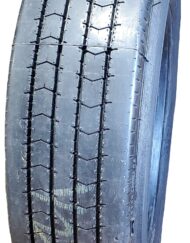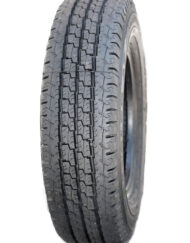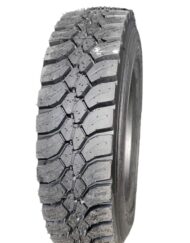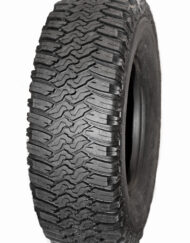Nine Lives: Buses and Retread Tires
Thanks to today’s modern advances in technology, materials and manufacturing processes, the tires used on public buses are stronger and more durable than ever before. Manufacturers of bus tires specifically design their products for multiple lives, meaning the tires are designed with the intention of eventually being retreaded. Tire retreading enables bus fleets both commercial and school districts to dramatically improve their bottom line, and at the same time, help reduce the number of scrapped (wasted) tires as well as conserve oil.
One of the biggest challenges bus fleet operators face is the fact that the drive tires on their vehicles are operated under extremely hot conditions, which ultimately shortens their tread life expectancy. This occurs in large part because of how bus bodies are traditionally configured. Typically, drive tires are encased in sheet metal, which is designed to create a wheel well in the rear of the bus that is almost entirely enclosed. This design reduces the airflow around the tire, which causes heat build-up.
To combat this, many tire manufacturers are now designing bus tires using the same technology that is used in the development, design and manufacturing of line-haul truck tires. These types of tires are not enclosed and can therefore operate with ample air circulation, which helps to moderate temperatures. For bus tires, changes to their construction must be made in order to promote better dissipation of heat from the tread area while also maintaining adequate resistance to scuffs and other curb damage.
How Retreading Can Help
Tire retreading for bus tires can dramatically improve their value by reducing overall costs associated with the tires. Strategically constructed and well-maintained bus tires can produce the same number of miles of use after they’ve been retread as they could when they were brand new. The more costly the original tire was when purchased new, the greater the amount of savings when it comes time to retread. By avoiding the need to discard worn tires, the process of tire recapping saves the fleet money.
Retread Tires – Best Practices
To improve the chances of bus tires being retreaded for at least one additional lifecycle, possibly even two, bus operators should adhere to the following best practices:
- Engage in proper and ongoing bus maintenance
- Monitor air pressure regularly using a well-calibrated tire gauge
- Avoid overloading
- Negotiate turns with care to avoid excessive contact of tire tread surface on the pavement
Additionally, drivers should make an effort to avoid operating on underinflated bus tires, as this can cause disproportionate distribution of weight across the full width of the tire. When this happens, the tire’s sidewall heats up and becomes over-flexed, resulting in faster wear of the tread. This can impact safety as well as performance. Conversely, bus tires that are overinflated can cause excessive wear in the center of the tread. This can result in reduced traction, difficulty handling, a rougher ride and increased uneven wear.
Tire Retreading Makes Environmental Sense
Recapped tires aren’t just better for your wallet. They’re also more environmentally sound. Because they are petrochemical products, it can require up to 22 gallons of oil to manufacture just one new bus tire. Most of that oil is used in the casing, a section that is reused in the retreading process. This can dramatically reduce the amount of oil needed to just 7 gallons. As a result, with each and every tire retreading, approximately 15 gallons of oil can be saved. With somewhere around 470k bus tires produced annually, retreading has the potential to conserve millions of gallons of oil each year.
When to Retread
When a tread measurement indicates that at least 4/32” of tread remains on the casing it’s the ideal time to retread. Waiting longer could result in the inability to retread. That’s because part of the tire retreading process involves strong adhesion of the new tread to the old rubber base. Without enough existing tread, it could be too late.
Repaired Tires vs. New Tires
Structurally speaking, new tires and retread tires are nearly identical. The main difference between the two is that recapped tires feature new tread rubber that has been strategically and expertly attached to a previously used casing. With proper care, bus tires can be retread two or even three times, which provides hundreds of thousands of additional miles at a significantly lower cost than having to invest in brand new tires year over year. This saves money and improves profit margins for the fleet operator. In turn, those savings can then be passed on to the consumer.
If you’re interested in learning more about the tire retreading process or the history of this innovative, money-saving technology, give us a call at 855.507.3227.




